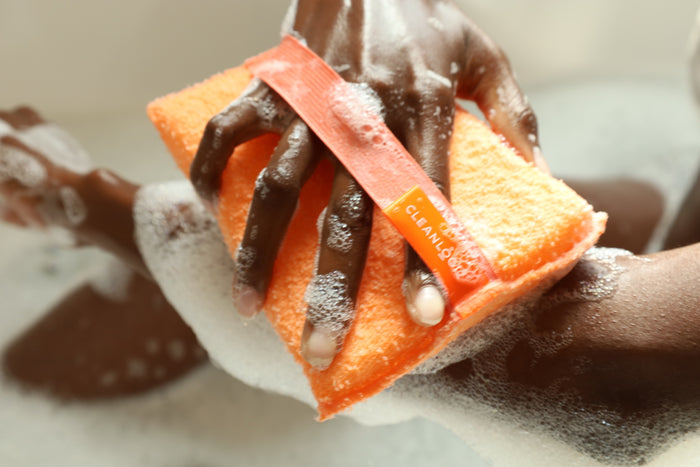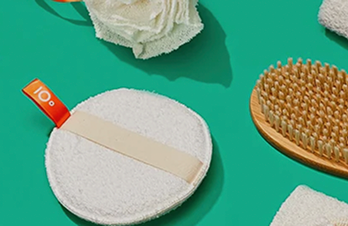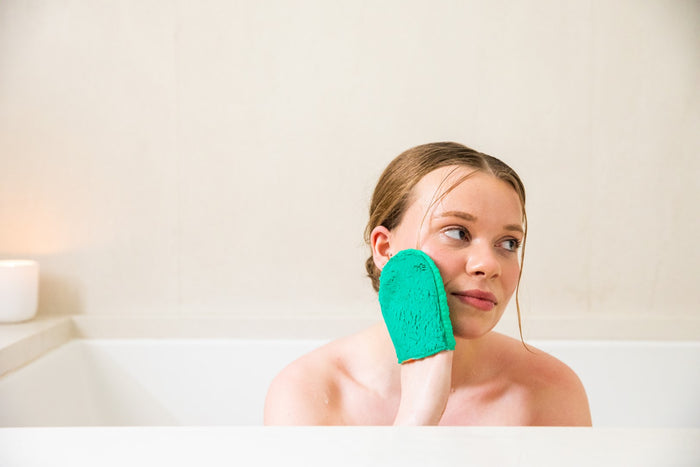Do you wonder why special creams exist for specific parts of the body?: face cream, foot cream, body cream. Also, face moisturizers are more expensive than body lotions, and using items meant for the body on the face doesn't produce entirely satisfying results.
This factor is due to the cells and structure of the skin on different parts of the body as they possess unique hardness and texture that require special treatments. However, understanding the complexity of the skin goes more profound, and this post will examine the primary differences between the skin on your face, back, body, etc.
Hopefully, the brief article should satisfy any question you may have about your skin and using other Skincare products.
How Skin Differs Throughout the Body
As previously explained, the skin on the face, head, back, armpit, and even feet are entirely different and respond best to specific products and chemicals.
The Face
The first component of our body people notice upon context is the face as it contains the features that define us, and the condition of its skin indicates our overall health. Additionally, our self-esteem is attached to our facial state as signs of aging or malnutrition are visible on the surface and can convey unintended messages to viewers.
One factor that differentiates the skin on the face compared to other parts is the thinness of the surface. Additionally, the skin around the eyes is remarkably thinner and more delicate and requires less harsh chemicals for cleaning.
However, not everyone possesses the same type of facial skin as skin types vary, and they include dry, oily, and normal. Each type responds best to different facial creams and chemicals; therefore, what works for you might not work for others.
The Back
The back is one of the body's toughest skin surfaces as it's strong enough to withstand more damage thanks to muscles and fat. Additionally, the back comes with multiple sebaceous glands that secrete sebum, an oily substance like the one on the face.
Unfortunately, plenty of skin cells, pores, and oil make the back susceptible to back acne, which is face acne but on the back. This issue occurs when the oil is mixed with the dead skin and clogs the pores, leading to bacteria growth that causes inflammation.
Back acne is commonly associated with athletes who often sweat and experience friction between their gear and clothes. The clogged follicle eventually swells, leading to discomfort and bumps on the back.
Nevertheless, the back can handle more complex chemicals than the face as the surface is more sturdy and resistant.
The Body
The skin is the body's largest organ and has a total area of 20 square feet, and unique parts like the hands, legs, and stomach possess thicker layers due to their rigorous function.
These layers also protect the internal organs from microbes and the elements and help to keep the entire body cool during high temperatures. This increased resistance to multiple factors makes it a strong candidate for more brutal chemicals to penetrate the surface and nourish the necessary layers.
These layers start with the epidermis, which provides a waterproof barrier and decides our skin tone. Afterward, the next layer is the dermis, which contains solid connective tissues, sweat glands, and hair follicles. Lastly, there is the hypodermis that's made of fat and connective tissue.
These layers can experience damage when moisture leaves the epidermis, resulting in itching, dryness, and tightness, like the conditions of cracked feet.
How to Properly Care for Each Part of your Skin
Caring for the skin depends on the type of skin routine you follow and how often you subject its surface to stress and the elements. Below are some ways to care for the face, back, and body:
The Face
Caring for the skin is somewhat tricky as it's the most delicate surface of the body; nevertheless, the first step would be to clean the skin with exfoliants and other appropriate products to get rid of the dust and grime accumulated throughout the day.
Afterward, apply beauty products that supply essential nutrients to the surface and also replenish its moisture. These factors ensure that your skin stays fresh and retains its elasticity without breaking or feeling uncomfortable.
If your lifestyle subjects you to excessive sunlight, protect your skin with some sunscreen and prevent damage due to direct contact with the sunlight.
The Back
Start by washing the surface thoroughly with bathing soap and rid the skin of pore-clogging particles and annoying pimples that may have slowly formed. Afterward, exfoliate the skin with scrubs or sponges to remove dead cells that may mix with the oil and clog the pores.
If possible, consider scheduling a massage and have an expert release the knots and tension on your back and encourage proper blood circulation.
The Body
Taking Care of the body is a mixture of the method applied on the face and the back. The process begins with you washing the surface with soap to eliminate dust and grime.
After washing, exfoliate with a granular exfoliant. They are ideal for removing the dead skin that resides on the surface—afterward, moisturizers with the appropriate moisturizer like body lotion, foot cream, etc.
If you are exposed to the sun constantly, consider using sunscreen to reduce the impact of UV rays and keep the body looking vibrant.
The Correct Exfoliants for Each Part of your Skin
Exfoliation is an essential factor in keeping your skin radiant as it removes the dead tissue as it blocks the fresh layer, and makes it look dull. Additionally, there are two types of exfoliation; physical and chemical exfoliation is ideal for specific scenarios.
Physical exfoliation involves sharp particles painlessly peeling off the dead skin from the surface to reveal the fresh, visually appealing one. On the other hand, chemical exfoliation involves compounds that weaken the bond of waste skin cells, making them easy to detach from the surface.
Both types of exfoliants come in different styles; for example, physical exfoliants like scrubs are available for the face and other parts of the body and cannot be used on any other spot. The same applies to chemical exfoliants as they contain compounds ideal for the face or body.
Therefore, when purchasing your exfoliant, ensure it's ideal for the surface you wish to apply it as using the same exfoliant for the back will damage the facial skin.
Cleanlogic Bath and Body Dual-Texture Body Exfoliator – Cleanlogic Body Care












0 comments